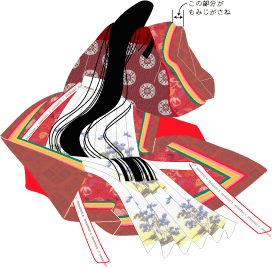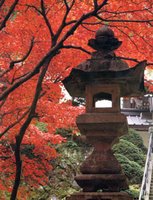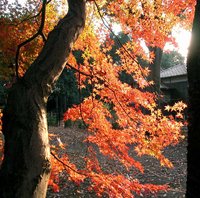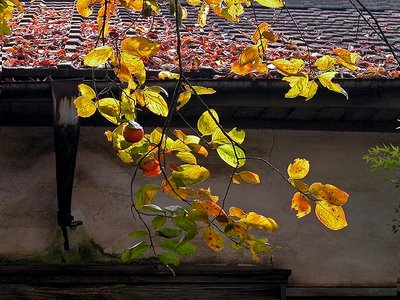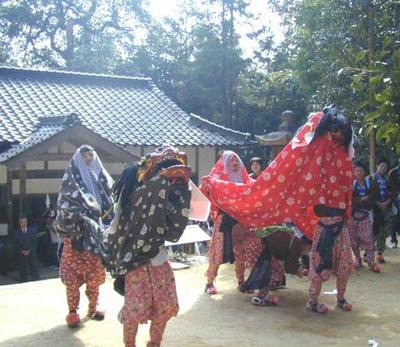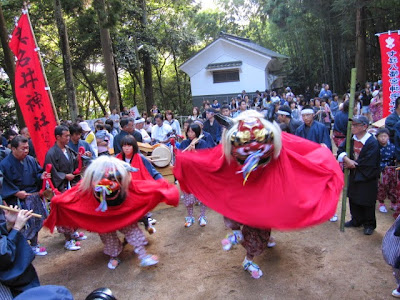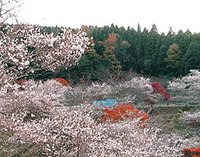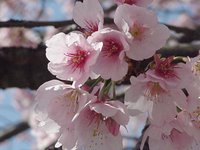:::::::::::::::::::::::::::::::::::::::::::::::::::::::::::::::::::::::::::::::::::::::::::::::::::::
Battledore, Shuttlecock (hagoita)
***** Location: Japan
***** Season: New Year
***** Category: Humanity
*****************************
Explanation
Hagoita 羽子板 Battledore, Shuttlecock
is a game like badminton, with a wooden paddle and little balls with feathers. It is traditionally played during the New Year Holidays.
..... oibane, 追羽子 "chasing the feathers"
battledore and shuttlecock, yaribane 遣羽子
to play battledore, hane tsuku 羽子つく
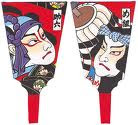

:::::::::::::::::::::::::::::::::::::::::::::::::::::::::::::::::::::::::::::::::::::::::::::::::::::
Japanese girls have their own favorite traditional toys and games. One popular game that has been around for a long time is hanetsuki, which resembles badminton but uses no net. The shuttlecock is made from a seed with feathers attached, and the paddle, called a hagoita, is rectangular and made of wood.
Hanetsuki dates back over 500 years. The paddles are decorated with various images, sometimes executed in relief: girls in kimonos, Kabuki actors, and so on. While kids still like to play hanetsuki, many people simply enjoy collecting the paddles for their decorative value.
source : web-japan.org
The seed used to be from mukuroji 無患子 and was used with the wish to raise happy children.
Girls who played tried to keep the feathers in the air as long as possible - to raise children with a long life. It the feathers fell on the ground, the loosing girl (who was now out of luck with having children) got her face painted with purifying black Chinese ink and could start again.

. mukuroji, Sapindus mukurossi, soapberry .
kigo for late autumn
. The First Lunar Month 一月 ichigatsu - 睦月 mutsuki - .
:::::::::::::::::::::::::::::::::::::::::::::::::::::::::::::::::::::::::::::::::::::::::::::::::::::
- quote
Battledore Museum (Hagoita Shiryokan)
5-43-25 Mukojima, Sumida
This game reached Japan from Japan during the Muromachi period, where it became a pastime for the court nobles and their children. When grown ups played it in teams, the loosing part had to drink a coup of ricewine.
Normal children in former times had very few toys and the custom to use these badminton paddles for the special New Year celebrations soon became popular during the Edo period among the richer merchand families. It is said to ward off evil for the whole year.
During the Edo period, the patterns became more elaborate, featuring famous Kabuki players, the Seven Gods of Good Luck, the first sunrise, the plum-bamboo-pine trio and other auspicious scenes. Instead of simply painting the patterns on wood, it became a custom to make them for decorations only, use stuffed picture-art (oshi-e 押し絵) and put faces of favorite actors on it. Nowadays the pattern range from the traditional ones to baseball stars, movie actors, and even the pink kitty cat.
quote from . . . Sumida City
.......................................................................

. Atago shrine in Tokyo 愛宕神社 Atago Jinja .
.......................................................................
- quote
Edo Oshi-e Hagoita - Padded Collage Paddles
■Traditional Technologies and Techniques
Creating the Oshi-e (padded collages) that feature in Edo Oshi-e Hagoita (padded collage paddles) involves stuffing cotton wadding between a stencil outline and a fabric base. The finished Oshi-e is then affixed to a Hagoita (a paddle) with paste using a spatula.
The faces of characters featured on Edo Oshi-e Hagoita are created after a surface has been smoothed by the application of successive layers of gofun (crushed seashell powder). A fine-tipped brush is used to create the face's eyes, its mouth, and the nose.
Oshi-e collages are comprised of a number of smaller elements. The constructing of a finished Oshi-e involves applying Japanese paper to the back of each element as it is completed. This process involves the use of a spatula and paste.
■Traditionally Used Raw Materials
Paulownia wood is used for the Hagoita paddles.
Silk and cotton textiles are used to make Oshi-e. Cotton wadding is used to fill out the pictures.
Silk thread is used for hair.

■History and Characteristics
Each year, when people start to feel the onset of the year's end, as part of a long-standing tradition, there is a market selling Hagoita including Edo Oshi-e Hagoita (padded collage paddles) which occurs from December 17th to 19th. This event takes place in the grounds of Asakusa Temple in Taito Ward, Tokyo. Within each of the participating stalls, there are an amazing number of colorful Hagoita displayed which look out on interested visitors. It is a well-known event that both strikes up business as well as welcomes the end of the current year.
Hagoita were originally used to play a form of Japanese battledore (a forerunner of badminton). In ancient times, "Hagoita" were referred to by the names "Kogiita" and "Hanekoita," while shuttlecocks were known by names such as "Koginoko," "Hagonoko" and "Tsukubane."
On the 5th day of the first month in the fourth year of the Eikyo Era (1429-1441), it is recorded that members of the imperial family, the aristocracy and their attendants all gathered at an imperial palace. And they engaged in a game using Hagoita paddles being divided into teams of men and women.
At the time, Hagoita were decorated in a number of ways. One decorative style was called "Kaki-e Hagoita," which involved pictures being drawn directly on the surface of a paddle. There was also a style called "Hari-e Hagoita," where paper and cloth was affixed to paddles. Additionally, there were extravagant and flashy "Sagicho Hagoita" colored with "gofun," and some examples went so far as to be inlayed with gold and silver leaf, or decorated with maki-e (gold or silver lacquer).
On entering the Edo Period (1603-1868), decorations began to be made in which material was stuck to thick cardboard backings, or cotton wadding was used to add thickness. It was through such methods that the Oshi-e techniques developed, and these techniques resulted in it being possible to create collages with a three-dimensional visual effect.
During the Bunka and Bunsei Eras (1804-1829), as the culture of the common classes in Edo developed, along with a boom in Kabuki, there was a lot of work published by the numerous woodblock artists who were active at the time.
Against this backcloth, there were advances in the technology used to make Oshi-e and it was possible to make Hagoita on which the likenesses of famous Kabuki actors were featured, this genre being called "Yakusha (actor) Hagoita."
As each year drew to a close, there used to be competitive demand for the role depictions of that year's popular Kabuki stars. In this respect, the sale of Yakusha Hagoita acted as a barometer of actors' popularity in any particular year.
Tokyo Hina Doll Manufacturing Association
(also available in Japanese)
- source : www.sangyo-rodo.metro.tokyo.jp/shoko
. Traditional Crafts of Tokyo and Edo .
:::::::::::::::::::::::::::::::::::::::::::::::::::::::::::::::::::::::::::::::::::::::::::::::::::::
Woodblock Print by Okumura Masanobu
Courtesan Striking a Shuttlecock with a Battledore

Curtesy of the Allen Memorial Art Museum
http://www.oberlin.edu/allenart/collection/masanobu_okumura.html
:::::::::::::::::::::::::::::::::::::::::::::::::::::::::::::::::::::::::::::::::::::::::::::::::::::
Kasugabe Oshie Hagoita
Saitama prefecture has some places where Hagoita are made. The town of Kasugabe is one of them.
The making of Oshie-Hagoita is said to have begun in the Edo era (1603-1867) and they developed from Oshie on Sagicho-Hagoita which were made by first pilling up Paris white, gold leaf was then put onto this and finally a design was printed.
During an evacuation in the Second World War Oshie craftsmen from Asakusa came to live here, thus a producing center was formed.
Oshie-Hagoita is made by a portrait artist first drawing a figure, and an Oshie expert makes a copy of that, using thick paper, which is then covered with cloth and nailed to a board, thus they have the feeling of being three-dimensional objects .
source : www.sainokuni-kanko.jp
. Kasukabe Daruma Dolls - Kasugabe 春日部張子
:::::::::::::::::::::::::::::::::::::::::::::::::::::::::::::::::::::::::::::::::::::::::::::::::::::
Hagoita ichi 羽子板市 market for battledores
observance kigo for mid-winter
Hagoita Fair at Asakusa, Downtown Tokyo
浅草羽子板市

A hagoita is a wooden paddle used in a New Year game similar to badminton. One side of the paddle is usually decorated with popular figures from Kabuki or portraits of beautiful women, but nowadays such "untraditional" portraits as popular animation figures and sports players also appear.
During the three-day-long fair from December 17 to 19, about 50 stallholders sell hagoita paddles of a variety of sizes and prices. The area within the shrine resounds until midnight with the sound of friendly voices inviting the shoppers to buy their waves and the hand-clapping which concludes a sale.
. . . CLICK here for Photos !
. Asakusa Kannon 浅草観音
Temple Senso-ji 浅草寺 and the Market
:::::::::::::::::::::::::::::::::::::::::::::::::::::::::::::::::::::::::::::::::::::::::::::::::::::

Hagoita from the Edo period
. . . CLICK here for Photos !
*****************************
Worldwide use
*****************************
Things found on the way
. tsurushibina つるし雛 / 吊るし雛 small hanging hina dolls .

The battledore is an auspicious present for parents, when a girl is born. It is given with the wish to strike back any bad influence and evil and the hope that the girl will grow up healthy and happy.
:::::::::::::::::::::::::::::::::::::::::::::::::::::::::::::::::::::::::::::::::::::::::::::::::::::::

. . . CLICK here for Photos !
*****************************
HAIKU
東山静に羽子の落ちにけり
Higashiyama shizuka ni hane no ochini keri
a shuttlecock
falls gently -
Higashiyama
Takahama Kyoshi 高浜虚子
. Higashiyama Culture in Kyoto
:::::::::::::::::::::::::::::::::::::::::::::::::::::::::::::::::::::::::::::::::::::::::::::::::::::
hane tsuku ya yogokoro shiranu oomatage
She straddles and takes long steps
As she plays battle-dore and shuttlecock,
Oblivious of the evil-minded world.
Taigi,
trans. Blyth
hane o tsuku oto no hibikishi yato no oku
the sound of Japanese
battledore and shuttlecock reverberates -
deep in Yato
Hoshino Takashi 星野高士, version by Susumu Takiguchi
*Yato 谷戸
is a secluded residential area of Kamakura with leafy hills and valleys.
.......................................................................
. - Masaoka Shiki 正岡子規 - .
At battledore
the girl of last year
not seen kana
tr. Harold J. Isaacson
yarihago no kaze ni joozu o tsukushi keri
Playing battledore and shuttlecock
While the wind was blowing,--
The acme of skill!
tr. Blyth
:::::::::::::::::::::::::::::::::::::::::::::::::::::::::::::::::::::::::::::::::::::::::::::::::::::

役者絵の羽子板に海見ゆるかな
yakusha-e hagoita ni umi miyuru kana
the picture of an actor
on a battledore –
seeing the ocean
Hagiwara Tokiya
Tr. Gabi Greve
:::::::::::::::::::::::::::::::::::::::::::::::::::::::::::::::::::::::::::::::::::::::::::::::::::::

. Sukeroku 助六 - Hero of Edo .
Information and haiku
:::::::::::::::::::::::::::::::::::::::::::::::::::::::::::::::::::::::::::::::::::::::::::::::::::::
LOOK here
Daruma on a battledore, Winter 2007
*****************************
Related words
***** New Year (shinnen, shin nen) Worldwide
***** New Year Ceremonies of Japan
A topical Saijiki
:::::::::::::::::::::::::::::::::::::::::::::::::::::::::::::::::::::::::::::::::::::::::::::::::::::
[ . BACK to WORLDKIGO . TOP . ]
[ . BACK to DARUMA MUSEUM TOP . ]
:::::::::::::::::::::::::::::::::::::::::::::::::::::::::::::::::::::::::::::::::::::::::::::::::::::






